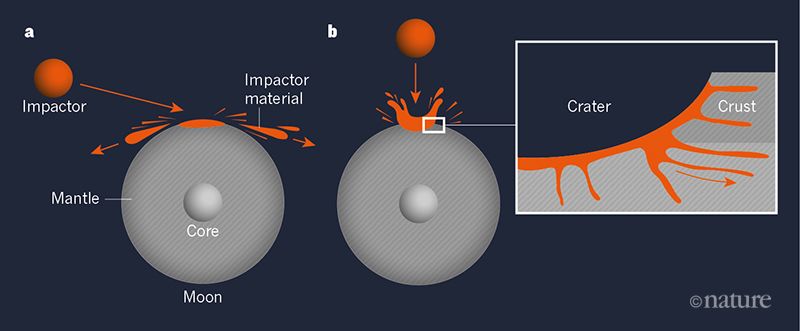A discovery published in Nature has established that the rate of retention of impact hammers by the Moon is lower than expected. This would explain the absence of valuable materials on our Satellite.
The discovery
Published in Nature, the study by Zhu et al. shows how the measurement of lunar rocks is heavily depleted in precious metals compared to the Earth. This implies that the ratio between the mass added to the Earth during late growth and that added to the Moon is greater than 1,000:1. Late growth is related to the release of water and other volatile elements on Earth, and this is probably a key factor for the habitability of our planet. Through myriad laboratory simulations, Zhu and his colleagues examined the mass fraction of the impactor that could be retained by planetary bodies, discovering that they found that material from larger impactors is retained less effectively than that of their smaller counterparts.

Still, making some studies on some of the lunar craters, it has been shown that the retention of the lunar mass has changed slightly over time, equal to about 20%, but still 3 times lower than previous estimates.
Experts’ interpretation
The fact therefore that mass retention implies several conclusions. First, the idea that precious metals were lost 4.5 to 5 billion years ago with the outbreak of the Big Bang is certainly difficult to prove. The loss of precious metals in a metal core can lead to the fractionation of these elements from each other.
See the other articles in the “Space” section of our blog.